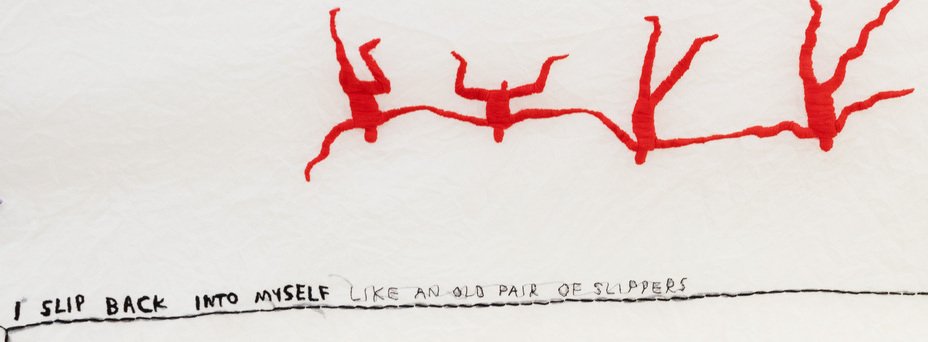Written by Cathleen Luo
Courtesy of Netflix’s Squid Game
A massive doll sings and shoots people down as they play Red Light, Green Light. Alliances form and break. Revenge and paranoia run rampant as the reward money increases with every meaningless death.
Squid Game, the new South Korean Netflix series, numbed my senses for the three days I spent binging it. The show embraces the darkest side of humanity, picking people off like lint on a sweater. The nine-episode season broke my brain, with scene after scene of massacre. The gore of Squid Game made the show both horribe yet alluring and I was disturbed by my own apathy after finishing the show. I have never liked slasher films or horror movies, but the balance of indulging on-screen violence and critiquing its inhumanity kept me thinking for days after. The grim atmosphere bled into my life and clouded my mind as I headed to the Metropolitan Museum for a school assignment.
Courtesy of Netflix’s Squid Game
The Met’s “Surrealism Beyond Borders'' exhibit is currently on show (October 11, 2021–January 30, 2022) and as a lover of Salvador Dali, De Chirico, Gertrude Abercrombie and all those other dreamy, haunted painters, I headed there, the gory ghost of Squid Game istll lingering in the back of my mind. I got lost in Gallery 889 for the remainder of my visit.
History has always leaned towards celebrating men, and when it came to surrealists unleashing their subconsciousness onto the canvas, most were men depictinig their unhinged sexual fantasies and lamented mommy issues. I hung on dearly to the paintings made by women, praying for motifs outside of allegorical flowers as vaginas, phalluses as power, and sex as antidote.
Frances Del Valle’s Guerrero y Esfinge, oil on canvas, ca. 1957
Frances Del Valle’s Guerrero y Esfinge, or “Warrior and Sphinx” immediately caught my eye when I walked into the non-Western surrealist section. Clearly, it was made by a woman, and a woman who had looked deep within herself and found something dark, and a little smug. The oil painting depicts a Sphinx, a symbol of an all-powerful, terrifying female figure, with caricatured features: huge breasts, backside, and a tapering waist. The oil painting depicts two figures, one sitting coyly and the other twisted on the ground before her. She sits cat-like, her legs tucked under her as if she is kneeling. Her alien-esque face has a large forehead, no hair, a pointed chin, and a green-ish white oval of an eye on a ghastly purple face.
The brutality in the piece comes from the Sphinx’s manipulation of the figure beneath her: a bowing, bloodied warrior, the assumed male figure. This overt gender violence is gory; her hands control unassuming gold threads of fate that force the warrior’s head into a meat-grinder type contraption.
Detail of Frances Del Valle’s Guerrero y Esfinge
When I first saw this, I was mesmerized by the calm expression of the alien-femme in comparison to the apathetic decapitation of the other figure. The way Del Valle both aestheticizes and distorts their bodies emphasizes the tyrannical power the Sphinx holds. Yet her gruesome body is appealing in a twisted kind of way, the aesthetics of figuration not forgotten. Del Valle’s use of color and thick, chalky paint adds to its allure. Through all its horror, it was one of the most beautiful paintings of the Surrealism Without Borders exhibit.
On another day, in a mind-frame untainted by Squid Game, I would’ve had reservations. Del Valle’s piece creates a grim scene, a monstrous representation of a woman forcing a warrior to mutilate himself, for what reason other than her own sadistic entertainment. The painting’s violence is disturbing, yet profound, referencing mythology and the role of gender in our realm as well as other possible ones we should aim to avoid. Del Valle both indulges us in a nightmare where feminicide is reversed while simultaneously warning us against it. Her freedom of expressing these dark fantasies reinforces the reason why this sort of reality must never come to fruition.
In a similar strain, Squid Game shares a similar project. Like other horror movies, Squid Game thrills us with horrifying scenes of murder until the massive number of deaths is so overhwhleming, we cannot even process the sheer dehumanizatiotn we are witnessing. This fictional world transports us to a nightmare that we start to accept as the norm. It is scary to think of how many people enjoyed this show. Reveling in bloodlust in a fantasy world allows us to explore the limits of our humanity while warning us away from it.
Squid Game and Guerrero y Esfinge are successful pieces of art because they are aware of the moral implications of the violence they portray and avoid glorifying these realities. Movies like The Wolf of Wall Street or TV shows like Netflx’s You tiptoe that line of glamourising lifestyles that are inherently toxic, and as mass-distributed media, should be more aware of their impact on viewers, and more importantly, what they add to the universal conversation of what it means to be a humane person.
In the midst of all powerful man-murdering women and deadly children’s games, there is much to be learned from art and it’s unique way of teaching us how to be.





























